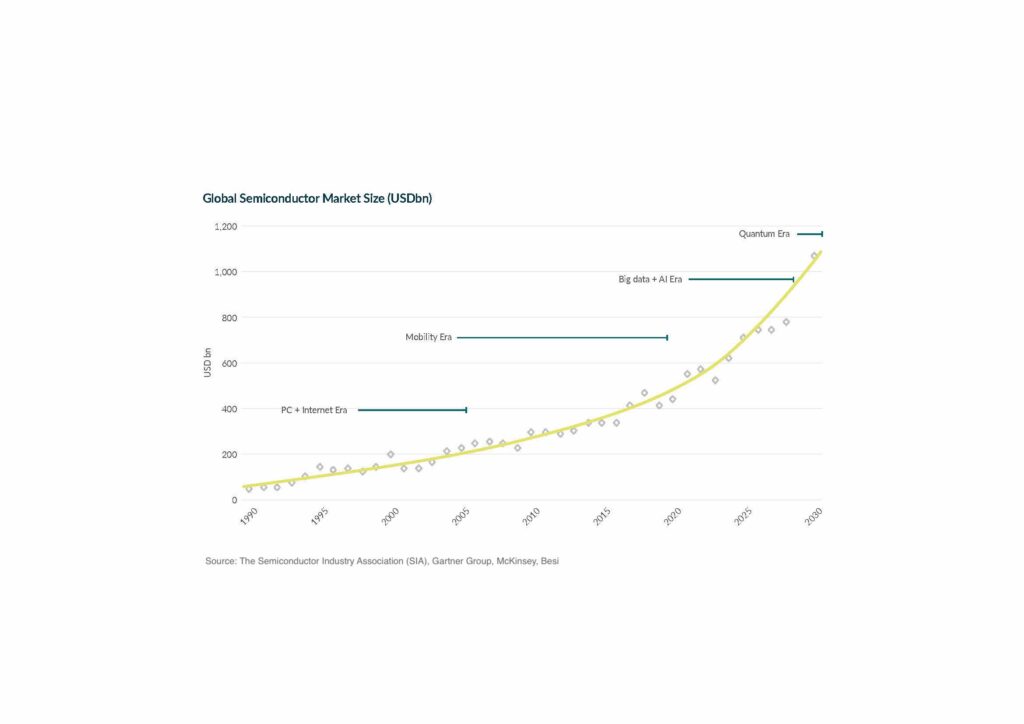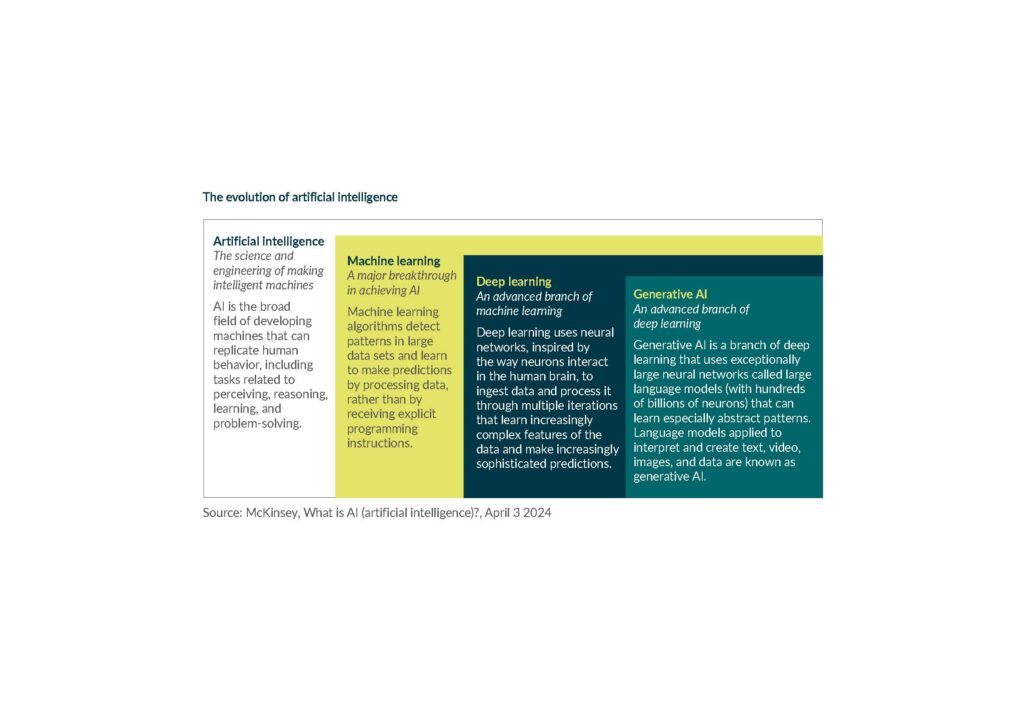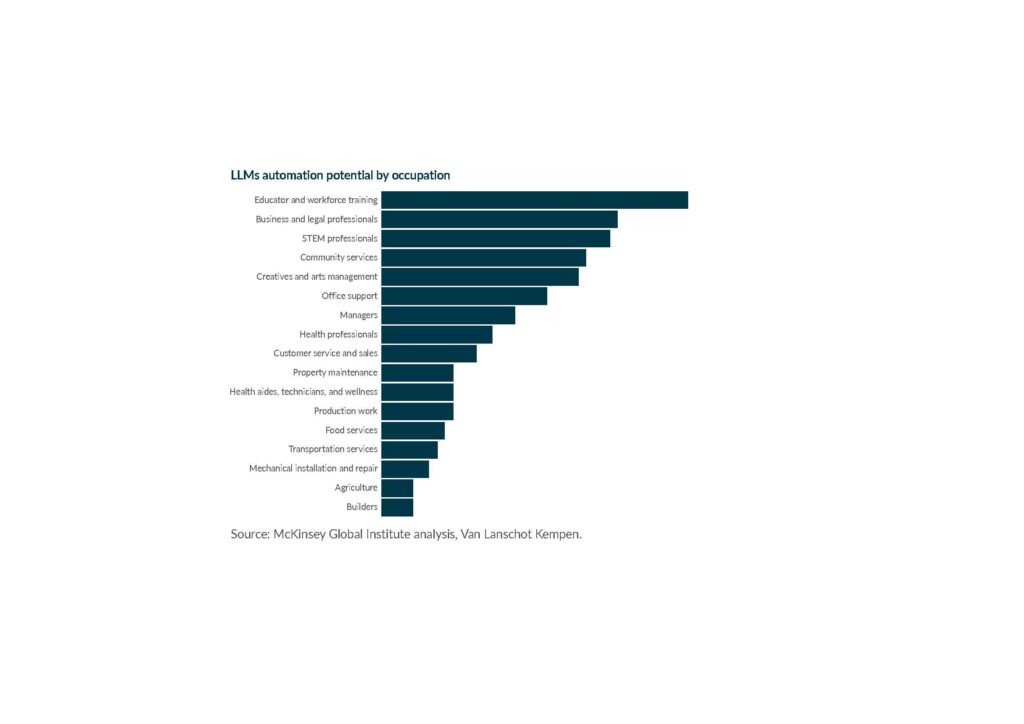By Van Lanschot Kempen Investment Management
Looking at our personal lives, it is not hard to see that the integration of digital technologies into human life is fundamentally transforming how we communicate, travel, work, learn, and conduct business. Core to the ongoing and accelerating digitalisation are semiconductors, which are designed to compute, store and transmit large quantities of data. The rapidly spreading use of artificial intelligence is even further and more dramatically intensifying the demand for powerful semiconductor chips. This paper examines how the increased use of artificial intelligence impacts the semiconductor sector and what risks and opportunities it provides to small-cap companies in particular.
An AI driven revenue revolution
While historical demand for semiconductors has been driven by personal and mobile computing, today, we see a new source of meaningful demand acceleration: Artificial Intelligence (AI), including Generative AI (GenAI). By 2030, the demand for more and increasingly powerful semiconductor chips could push the global semiconductor industry to USD 1 trillion in sales, from USD 500bn today.1 It took the market over 50 years to reach this point.2

AI potential
Let’s consider the revenue growth mentioned above. GenAI is a form of machine learning that uses patterns in training data to generate new text, video, images, code, or music that can potentially be indistinguishable from what humans can create. Moreover, its appeal is that over time, the creation can be performed faster, cheaper, and with fewer errors than humans would ever make. Within the broad spectrum of GenAI, Large Language Models (LLMs) are a subset that have recently surged in popularity. LLMs are specifically trained to generate human language, with ChatGPT as a popular example.

As with many earlier emerging technologies, initial use cases do not capture the full spectrum of applications that may be found in the future. Human language is the basis of white collar, office work which means there are many workflows that can be replaced or complemented by LLMs. This versatility makes them a potentially powerful tool in all of the sectors seen in the chart below.

Do you want to read the full whitepaper? Or know more about our small-caps strategy? Please visit our website.
Footnotes:
1 McKinsey, The semiconductor decade: A trillion-dollar industry, April 1 2022
2 Besi Investors Presentation 2024
Disclaimer:
The Kempen (Lux) Global Small-cap Fund and Kempen (Lux) Sustainable European Small-cap Fund currently holds shares in the companies mentioned. The views expressed in this document may be subject to change at any given time, without prior notice. Van Lanschot Kempen Investment Management NV (VLK Investment Management) has no obligation to update the contents of this article. As asset manager VLK Investment Management may have investments, generally for the benefit of third parties, in financial instruments mentioned in this document and it may at any time decide to execute buy or sell transactions in these financial instruments. The information in this document is solely for your information. This article should not be considered to constitute an investment recommendation and it is not intended as an offer or a solicitation to buy or sell any financial instrument mentioned in this document. This article is based on information that we consider reliable, but we do not represent that it is accurate or complete, and it should not be relied on as such. The views expressed herein are our current views as of the date appearing on this document. This article has been produced independently of the company and the views contained herein are entirely those of VLK Investment Management.



